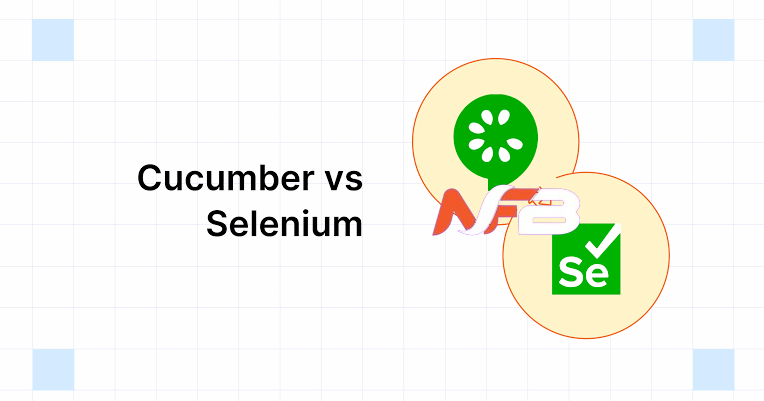In software testing, there are two giants: Selenium and Cucumber. With their huge strengths and distinctive methods, these instruments are as vital as air to testers everywhere. By looking at Selenium vs Cucumber more closely, we can understand what each does and when it is used.
1. Core functionality
Selenium is a robust automation testing tool that performs primarily as a web browser automation framework. It helps in executing web application testing for different platforms and browsers. Different from that, Cucumber is a BDD tool that centres on creating specifications in plain text that are executable.
2. Testing approach
Selenium is a test automation tool that uses a conventional approach where testers write scripts using programming languages such as Java, Python or C#. Those scripts will communicate with the web browser directly to imitate the user’s actions such as clicking buttons, filling forms and checking for elements. Unlike Cucumber, BDD brings together both technical and non-technical stakeholders to create executable specifications in plain English. These Gherkin-based living documentation specifications are comprehensible even to technically uneducated people.
3. Language flexibility
Selenium is compatible with several programming languages such as Java, Python, C#, and Ruby, however, Cucumber expands its compatibility by supporting multiple languages. Testers are allowed to write their Cucumber scenarios and step definitions using Java, Ruby, JavaScript or even Python which caters for different project needs and team choices.
4. Integration capabilities
Selenium can smoothly integrate with many third-party tools and frameworks thereby increasing its capabilities in test automation, continuous integration (CI), and delivery pipelines (CD). It can work hand-in-hand with testing frameworks like TestNG and JUnit making it very versatile during test execution as well as reporting. On the other hand, cucumber integrates easily with various testing frameworks and libraries thus enabling BDD practices. It works closely together with tools such as JUnit, TestNG, Capybara etc., hence allowing for seamless running of cucumber scenarios within existing test ecosystems.
5. Maintainability and scalability
UI automation tests implemented through Selenium tend to be very brittle, requiring regular maintenance in most cases. Every time there is a change in the UI elements or workflows, the test scripts need to be frequently updated, which results in the long battle of maintenance. On the contrary, Cucumber scenarios are written in a human-readable format that facilitates clarity and maintainability. Testers can modify or refactor scenarios without dealing with complex code structures thus simplifying the process of maintaining them and making them more scalable.
6. Community support and resources
Both Selenium and Cucumber have strong communities and abundant online resources. These tools are being developed and improved by programmers from around the world engaged in testing and the software design industry; such collaboration stimulates creativity while sharing their knowledge with others. Cucumber vs Selenium has active user forums, documentation sites filled with tutorials, and open-source projects galore – everything necessary for beginners or experienced specialists working with these frameworks.
In conclusion, testers have different needs depending on what they work with – web browsers should choose Selenium but if you’re looking at BDD tools that foster collaboration through transparency then go for Cucumber. It is crucial to understand these subtleties because it will help select the right automation tool according to team dynamics & project requirements hence ensuring efficient test implementation using any one of these two software.















Leave a Reply